On January 25, 1896, in the Grand Café de Capucine in Paris, people were frightened to see a train roaring towards them, thinking it was about to burst off the screen.
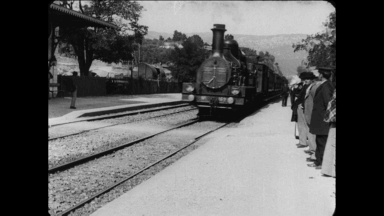
This was the first screening of the Lumière brothers' Train Coming in, which lasted only 50 seconds but is considered to have kicked off the history of cinema.
In fact, before that, Louis Lumière was the progenitor of what would become a drama in another film, The Watering Gardener, which brought out the dramatic conflict and character relationships in 44 seconds.
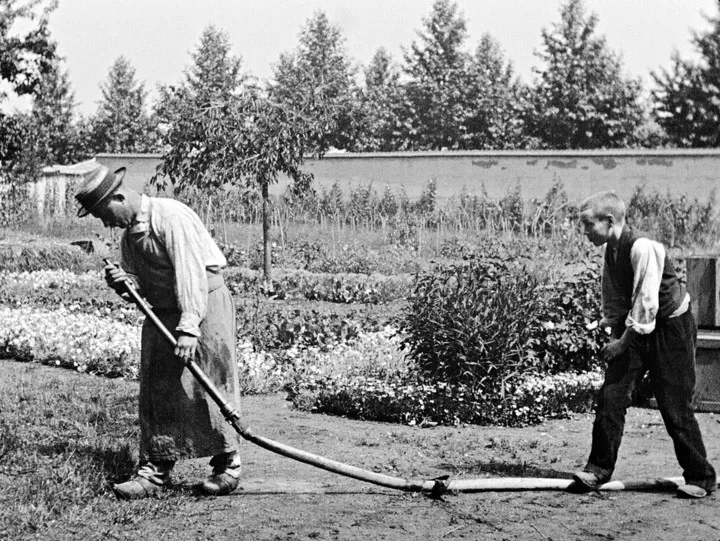
As director Jia Zhangke says, short films are the original form of cinema, and the history of cinema itself began with short films.
But unlike the past 100 years, the right to visual expression no longer belongs exclusively to professional creators. The increased performance of mobile phones has not only lowered the threshold of creativity, but also brought about a greater variety of expression.
The creator of the recently screened "Second Uncle" tells the story of Second Uncle's uneventful and twisted life with slightly crude images and plain language, and although there is a lot of controversy, it is undeniably a highly compelling video work.
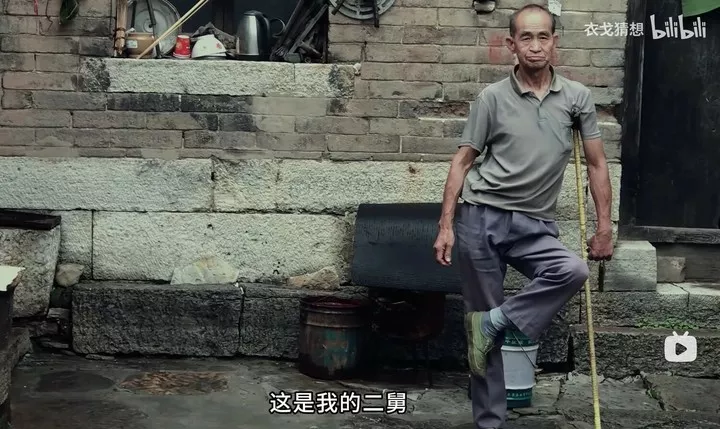
Images with realistic tensions like this are emerging all the time. I was at the Xining FIRST Youth Film Festival these days, and this feeling was even stronger.
FIRST has produced well-known filmmakers such as Wen Muye and Xin Yikun, and in this year's vivo x FIRST Super Short Film Competition, I saw a more diverse range of creators, high school students, dessert chefs, bank employees, bards ......
Many of them shoot with the tool of a mobile phone, and the de-elitist creators and tools bring instead a sincere and vibrant quality, which is the biggest difference from the feature films in the main competition.
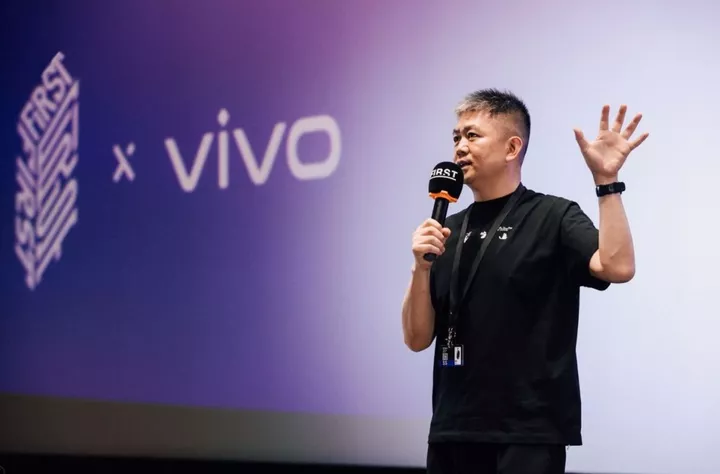
The founder of FIRST Youth Film Festival, Song Wen.
In the words of FIRST Youth Film Festival founder Song Wen, mobile phones and other devices allow everyone to find their own creative voice in a much less expensive way.
The value of images is being reinvented.
Five minutes of ultra-short films, the realistic tension of life
The FIRST Ultra Short Film category is limited to 5 minutes and does not accept entries that use professional-grade equipment for the entire film.
This means that creators need to make the most of different mediums, from cameras to mobile phones and even car recorders, which in turn leads to wildly creative expressions, and lighter expressions do not mean shallow, as director Liu Kuan, who won FIRST Super Short Film of the Year last year, says.
Five minutes is a seemingly light volume, but it's actually heavy because it requires you to be more precise and think more.
In these five-minute slices of life, there are sharp insights into social issues, subtle recognition of universal emotions, keen insights into the living conditions of contemporary people, and bold breakthroughs in creative forms and techniques.

I also want to talk about a few of the ones in there that impressed me.
The Lingering
First up is the opening film in the FIRST Super Short Film section, "Lingding," which is almost exclusively a two-shot front-and-back, with one actor playing two roles and a couch, using a TV screen as a window to connect reality and heaven.
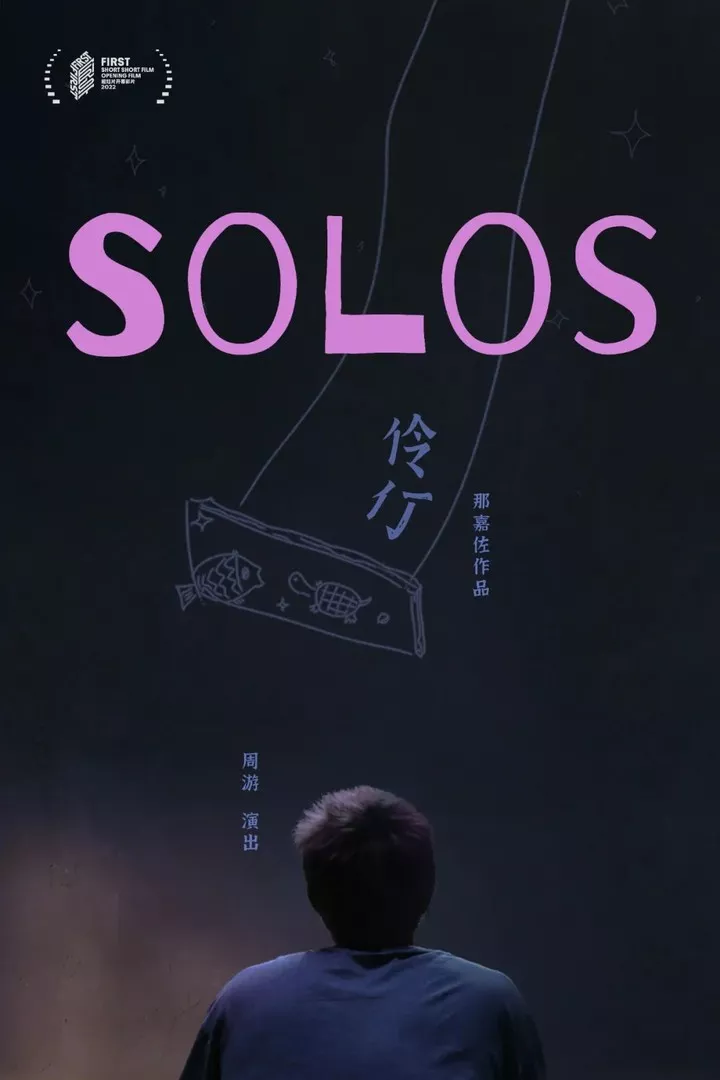
The seemingly open-minded grandfather is still regretting his past regrets, and the missing family chooses to "lie flat" as the chart of an ordinary family unfolds.
The pale light illuminating a corner of a dimly lit room and the snowy paradise of the television set creates an atmosphere of absurdity and fantasy, with a sense of loneliness spreading through the images.

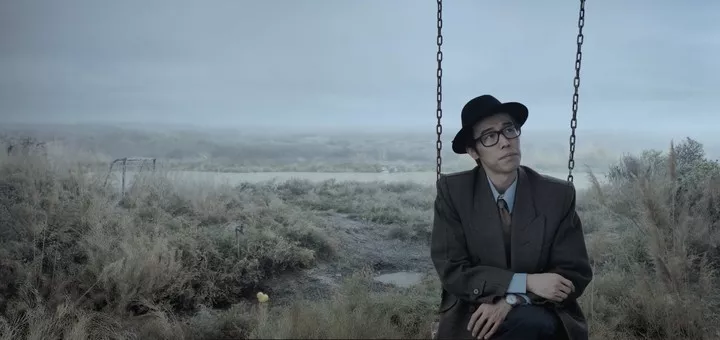
In a story that relies on dialogue to move forward, the somberness of the real space, the brightness of the virtual world, the detail of the characters, the shifts in light and dark, it actually demands no less from the director's scheduling and equipment shooting performance.
So much so, that at one point, I had a hard time believing that the footage was shot entirely on my phone, knowing that I was watching this short film on the big screen.
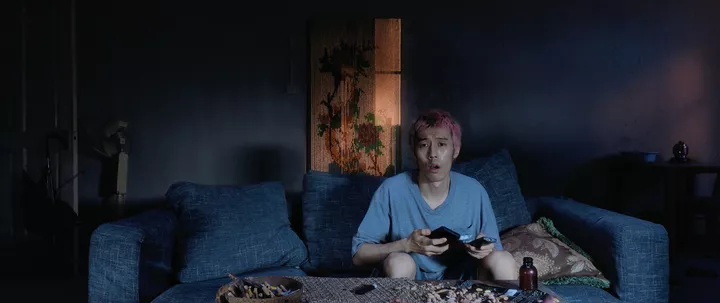
In fact, even director Najazo was surprised by the shoot, saying that the film was created using the vivo X80 Pro, which "includes a lot of detail in the representation of our scenes, and in the representation of the characters."
"Lingering" can be described as an exploration of the limits of mobile phone image creation by the director.
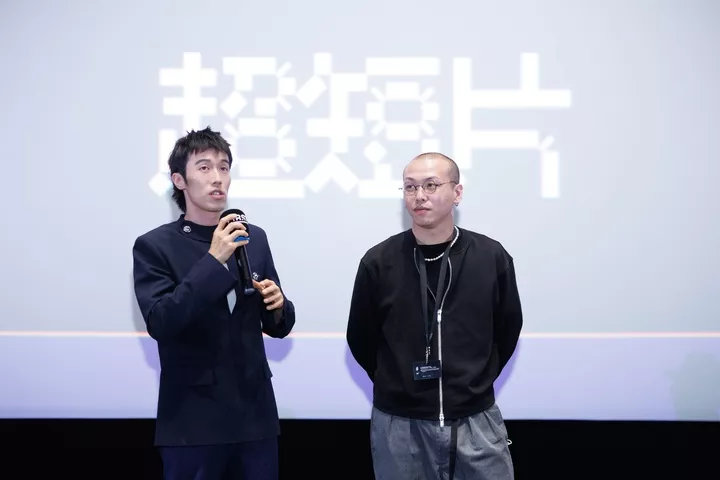
▲ "Lingding" creators Na Jazo (right) and Zhou You (left)
Having previously made more feature films, and having been selected for the Cannes Film Festival last year with Street Child, Najazo can also see how the new generation of filmmakers are using new media and tools to expand the imagination of 'narrative'.
The phone is more of an exercise in thinking, the immediate reaction of the moment. It will have some serendipity to it, in a way that traditional movies don't quite do.
Planet B602
The five-minute time scale is stretched out in the film, just as our perception of time has been altered by the epidemic over the past two years.
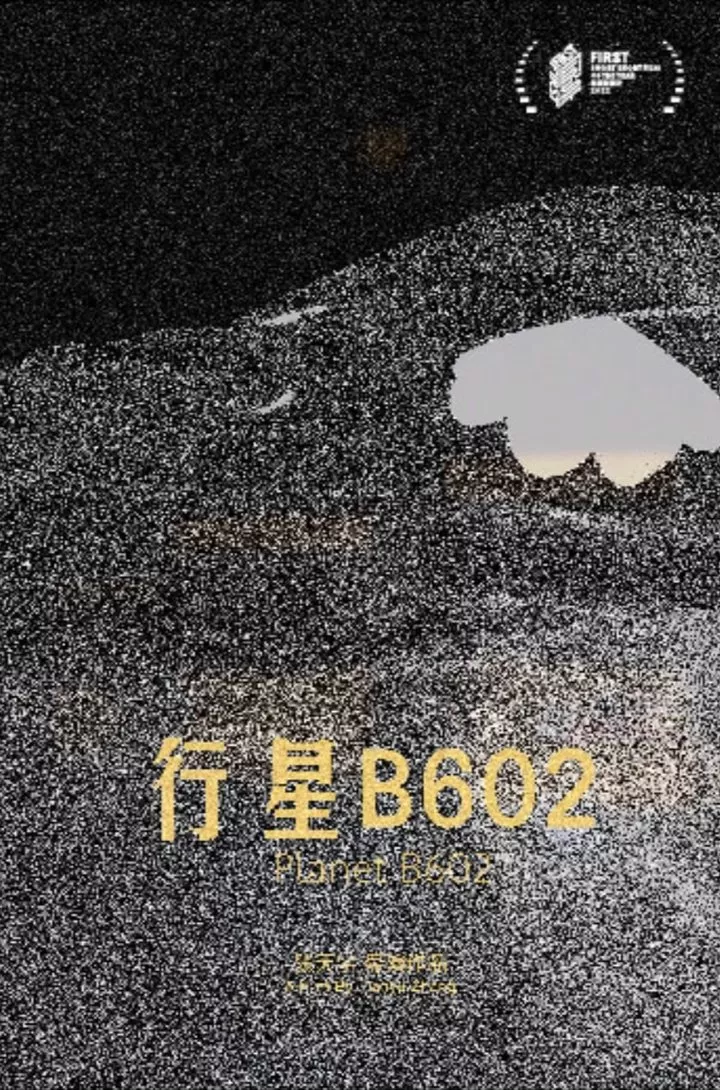
Planet B602 builds a simple yet powerful metaphor, with the doohickey becoming the planet that unites the home and isolates the dull life, just like planet B612, where the young prince is, and you can see the echoes of both from the title of the film.
This B602 planet has 24 months in a year, and the rhythm of the seasons is controlled by a seemingly strange clock, which is actually a day in a realistic dimension.
This is a visual expression of "from life, above life", as mentioned in the award speech of this work.
This super-short film is a meditation on the relationship between ourselves and the fleeting and tedious nature of time, and our desire to experience the world beyond our boundaries.
Highways
A short film adapted from a true story, when Yu learns that his parents' van will be passing the highway south of the city the next day, he decides to cross the school fence, through the woods, graveyards and fields, just to be at the bottom of the highway hill, just to say hello to his parents who are passing by.
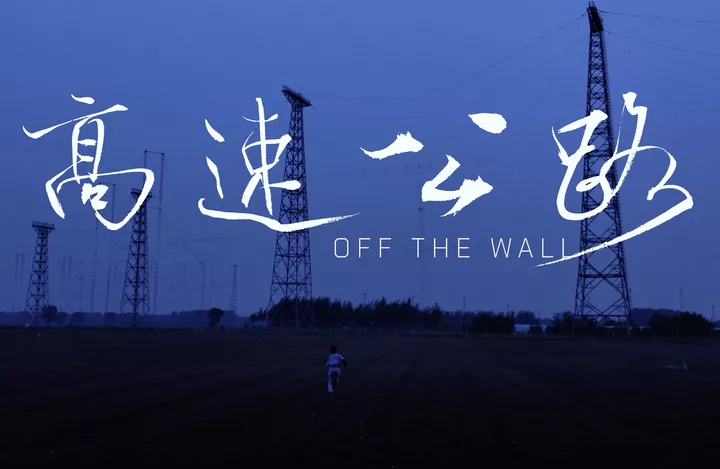
After 30 seconds, there are almost no lines, but the purest and most sincere emotions of the teenagers are presented. And the horn of the big truck at the end is a response to this emotion.
This super short film makes full use of the different features of the mobile phone as a tool for visual expression, which is an important reason why the film won the Best Creation Award in the Super Short Film category for vivo mobile phones.
Ayu's run towards the highway is a pile-up of pining emotions, and the handheld follow-up footage with the vivo X80 Pro is stable enough.
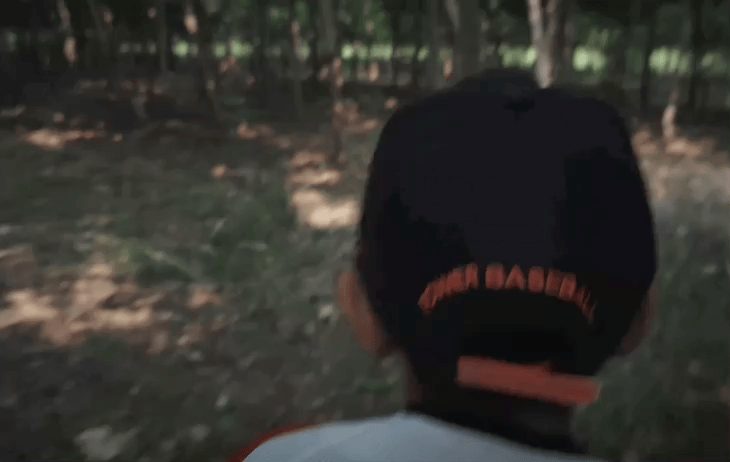
This video stabilization is made possible by vivo's unique Micro Cloud Station technology, as mentioned in our previous review, which improves lens stability by offsetting some of the shake through mechanical structural movement, and excellent motion stabilization and portability for the average creator, while lowering the threshold for implementing complex mirroring.
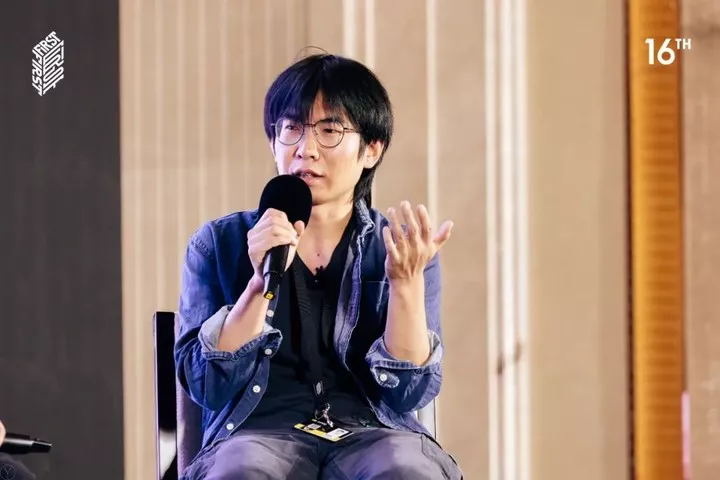 ▲"Highway" by Zhang Zhongchen
▲"Highway" by Zhang Zhongchen
Zhang Zhongchen also mentioned a behind-the-scenes feature at the Super Short Film Forum, in which a lightning shot in the film was actually recorded offhand with a cell phone, and then the script was adjusted based on the lightning footage.
The best thing about working with a mobile phone is that I can shoot the material forward, which was not possible when I was shooting with a professional camera
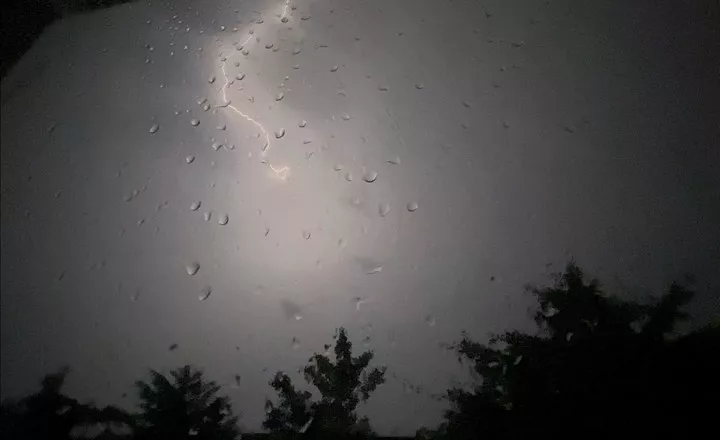
And the rendition of the child in the film adds to the climactic burst of emotion; it's actually a vegetarian actor, and it's not easy for the director to capture the emotions of a normal person who is often intimidated by facing the camera for the first time.
The common device of a mobile phone instead dissolves the fear of the vegetarian actor and allows him to maintain a natural state in front of the camera. Director Zhang Zhongchen said that for one of the crying scenes in the dormitory, he talked to the young actor before filming and the child naturally started wanting to cry because he was so homesick.
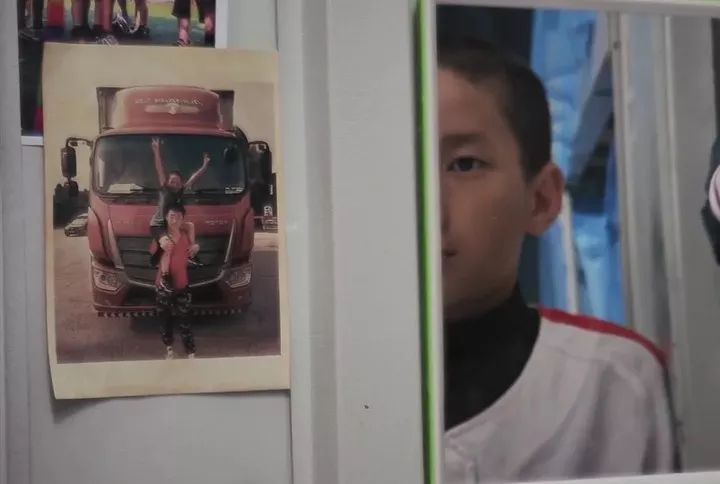
This is the biggest difference between mobile phone photography and camera photography. Zhang Zhongchen told us that the whole state of both the photographer and the children in front of the camera is more natural when they are facing a mobile phone lens.
I let the camera capture the scene at the time because the phone shot was very light. If it was a camera, it would actually be difficult to capture the real state, after all, there would be a sense of pressure.
"The Wanderer is much unafraid "
It was just mentioned that mobile phones make it easier to establish a sense of trust with the subject, bringing about a realistic representation that more closely resembles a documentary. This characteristic of the medium is even more evident in "Many Wanderers Are Not Afraid," which reflects life in Wuhan's post-epidemic era.
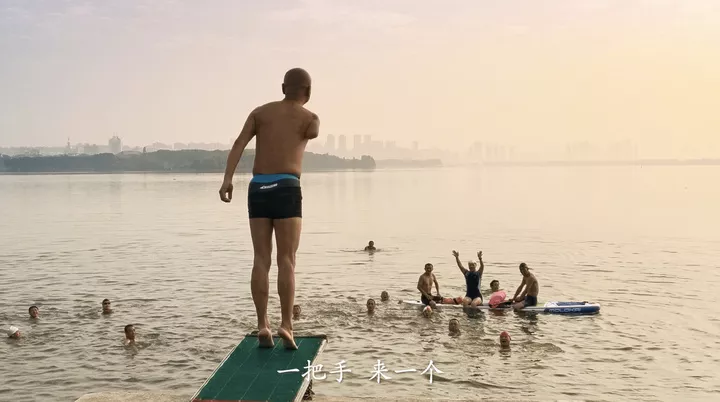
Early in the morning, a swimming team of middle-aged and elderly people met to swim in East Lake. After the crowd jumped into the water, the recovered newly crowned patient "A Handful" was still hesitant to enter the water, and "A Handful" finally took off his mask and jumped into East Lake. The crowd chanted in unison.
Swim, swim forward!
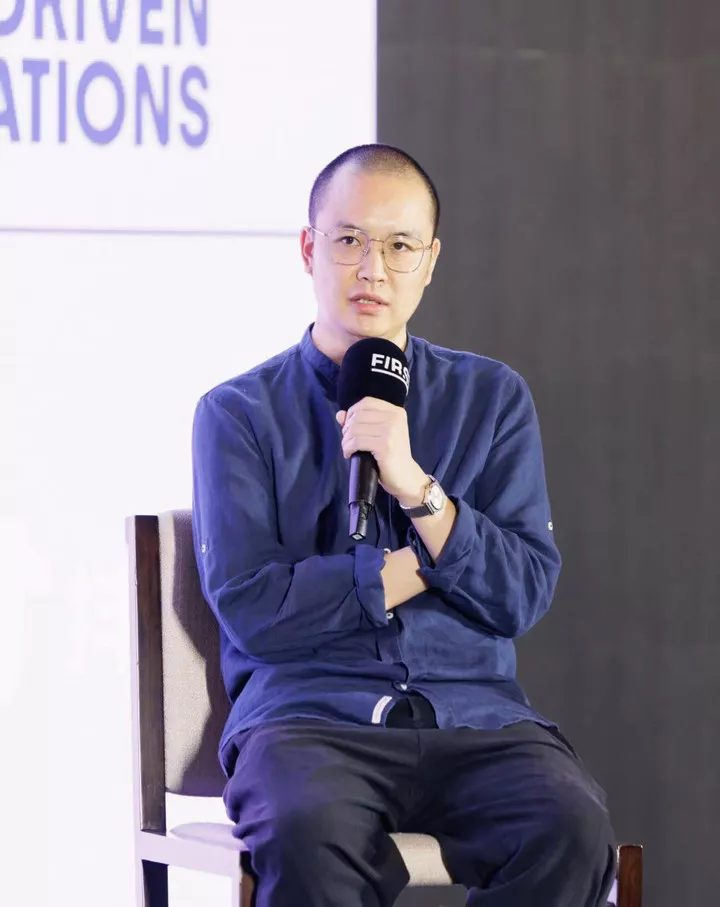
The director of "The Wanderer is Not Afraid", Zhang Xiaoshark
Director Zhang Xiaoshark completed his sketch of a group of ordinary people with a mobile phone lens, and he found the experience very 'freeing'.
We are like craftsmen who carve jade, when we find a piece of jade and perceive that it is well suited to be carved with a small carving knife, then a handy device like a mobile phone is like this small carving knife, perhaps this is the time when we can convey our feelings and expressions to the audience with only the proper processing
Two Hundred on a Spit
Spitting Two Hundred was arguably the most striking of the current super-short films to me in terms of visual form and visual creativity.
An online taxi picks up a drunken man late at night and completes a 'Fast and Furious' adventure to keep him from throwing up in the car.
The blue decorative light strip inside the Netflix car gives a disorienting light and shadow style at night, which nicely shows the state of the drunk and the driver's inner anxiety.
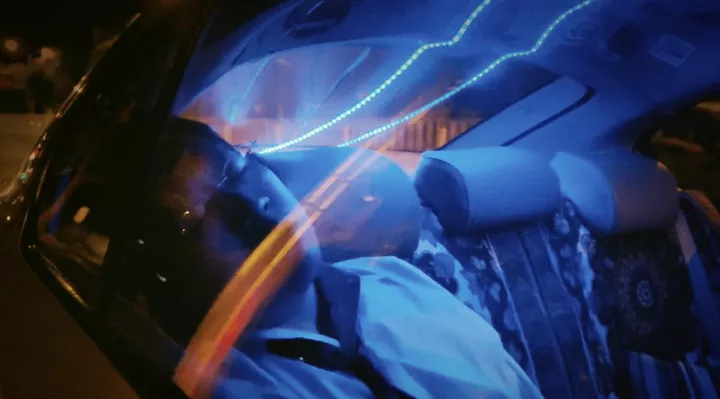
The rich colors, the shaky camera, reminded me of the same moody color language in Chungking Forest.
Only this time director Ikramu is using his mobile phone to complete such a shot, with the help of vivo X80 Pro Zeiss Color 2.0 tuning and self developed chip V1+'s extreme night noise reduction algorithm. In the night scene shooting scenes without much auxiliary light source, it still presents clean and realistic picture colors, presenting the wonderful light and shadow of late night.

And one of the most impressive shots in the film for me was the use of a drunken man's perspective to show drifting. The director said the shot was straightforward, having the actor grab his phone to 'take a selfie' and shake it as the vehicle moved, which turned out to be surprisingly effective with motion stabilization.
I didn't think I might be able to use this kind of lens, and it turns out it can still be done, and it did open up some inspiration and some angles on this.
In these ultra-short films, I see the creators exploring video experimentation through new media and tools. But the essence of video narrative has not changed, it still wants to make the audience feel the tension of reality and human emotions that concern the present.
The public and social nature of image expression is not limited by duration
Short videos have become the most popular form of expression today, but many people have the impression that they are quick, superficial and eye-candy.
What is the social and cultural significance of hyper-shorts in today's Internet environment?
Without the rituals of the offline scene, the extremely compressed narrative time, whether the public and social nature of the image can still be maintained, the famous film scholar Dai Jinhua believes that these two films can continue to survive the key.
At FIRST Youth Film Festival, I also try to find answers through the exchange of these creators.
Post-90s director Zhang Zhongchen won Best Feature Film and Best Director in the FIRST main competition last year for his debut film The Last Goodbye, and this year he is participating in the Super Short Film category.
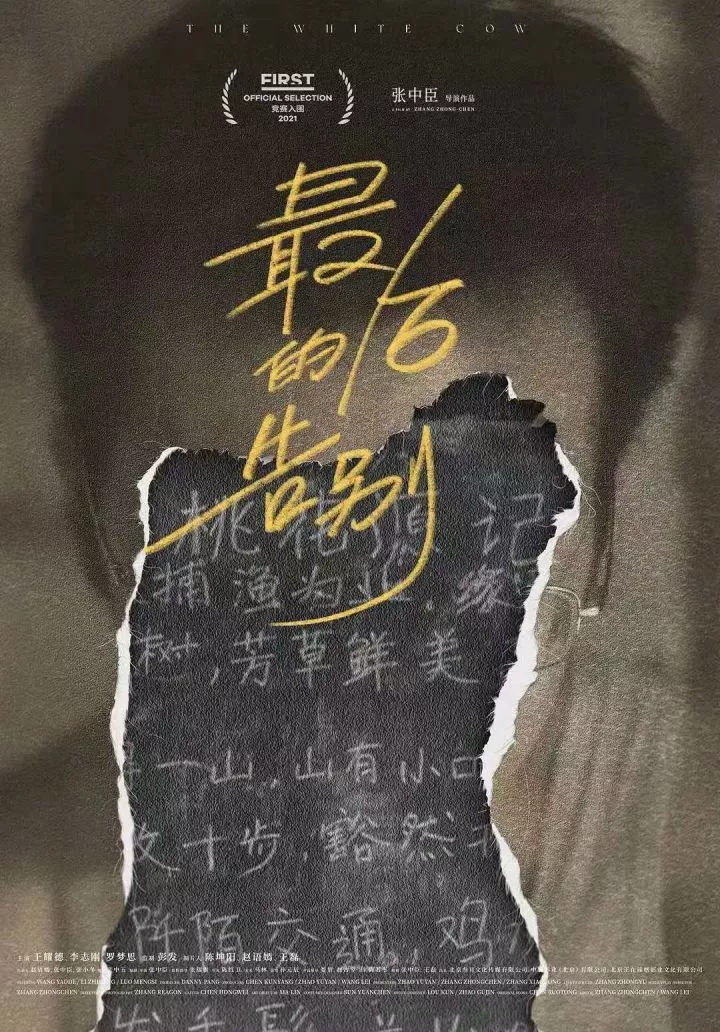
After working on feature films and ultra-shorts, Zhang Zhongchen has gained a new understanding of both mediums, telling us that content and emotion are not limited by duration, "as long as it's brave and true images, it's enough, don't care about the form, care about what you say. ".
Whether you are a professional director or a writer exploring, the genuine expression is not limited by portable devices, and the length of time does not prevent the creation from extending. Even in the face of countless "unattainable" scenes, creativity continues to grow in the images.
The indie film Orange, which received critical acclaim back in 2015 at Sundance, was shot entirely on mobile phones. Acclaimed director Soderbergh, who has been working on the big screen, also went on record in 2018 saying, "I think mobile filming for movies is the future."

▲ Image from: The Color of Orange
Time Sickness, which won jury honors in the Super Short Film category this year, is shot and directed by a non-college student, but manages to make the audience feel the cutting pain of her being crushed by time, with a human touch in the images.
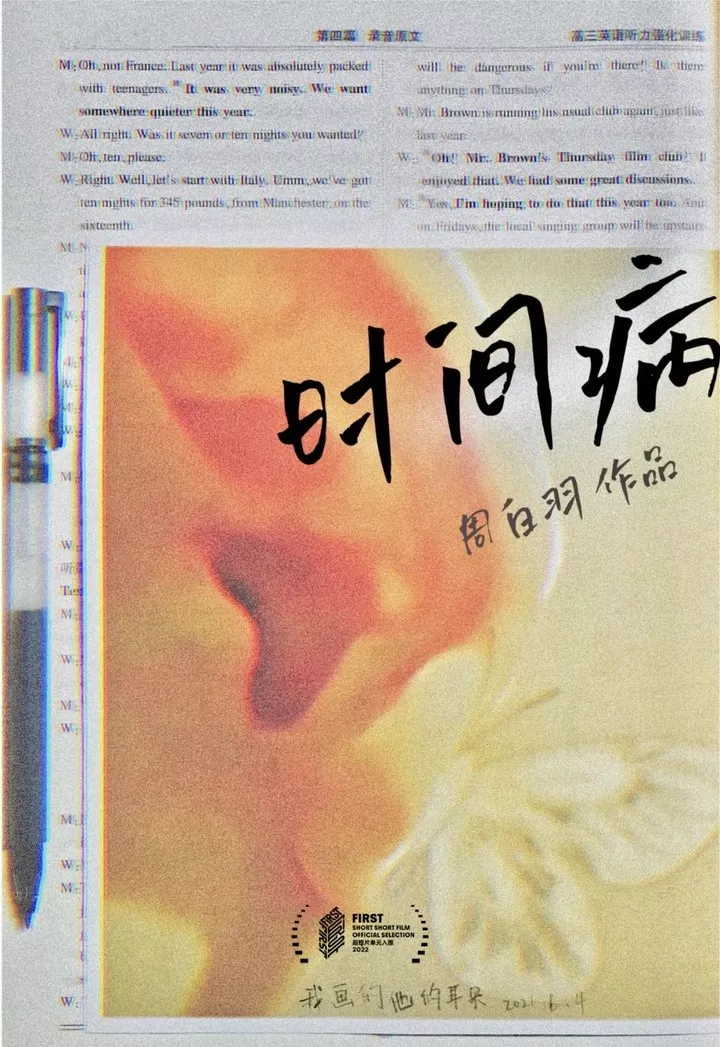
I was struck by a quote from director Zhou Baiyu after winning the award, "Images shouldn't exist on a pedestal, whether it's a super short or a big feature film, as long as the content is sincere it can move people. "
No matter how the tools of creation and the medium of communication change, the tangible recording and observation of realistic emotions will always resonate.
The change of tools and forms has brought a new audiovisual language to the creators. Facing this generation of digital natives who grew up with the Internet, it is perhaps more direct and effective to use this image language to express sociality and publicness.
Every person with a cell phone is a director of life
This is the third year of the vivo x FIRST Super Short Film Competition, which coincides with three of the most torturous years in the film industry, with a large number of film projects being put on hold and a large number of cinemas struggling to survive.
However, in the Super Short Film section, we see more and more enthusiastic creators joining the ranks of video creation, even with non-professional equipment, but still insisting on thinking and expressing the reality of life.
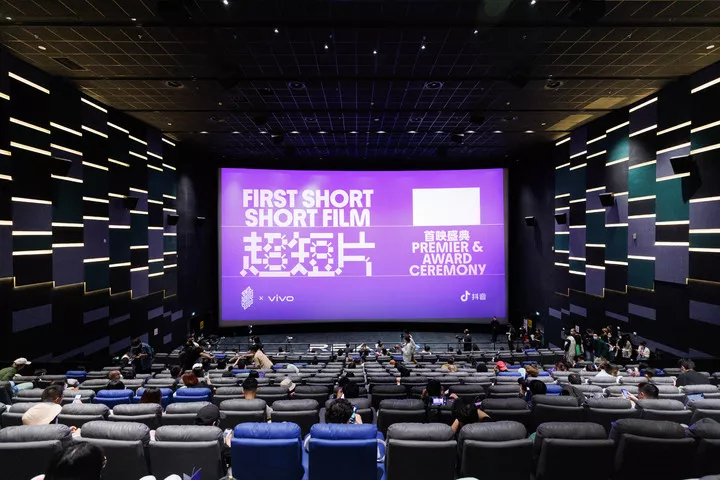
According to the organizers, 55.21% of the submissions received for this year's Super Short Film category were shot on mobile phones, compared to 21% in the first edition in 2020. The identity of the creators is also more diverse and grassroots, with the post-00s accounting for 41.5% of the participants, forming the youngest video creation community.
Smartphones have lowered the threshold of image creation, and mobile phone manufacturers such as vivo continue to close the gap with professional devices in terms of photography performance, which is changing the ecology of image narratives.
Mobile phones are making the process of image creation easier and more enjoyable, said Liu Yinwei, senior image effects product manager at Vivo, Vivo imaging technology has always adhered to a human-centric philosophy, not to keep stacking hardware for performance, but from the actual needs of creators.
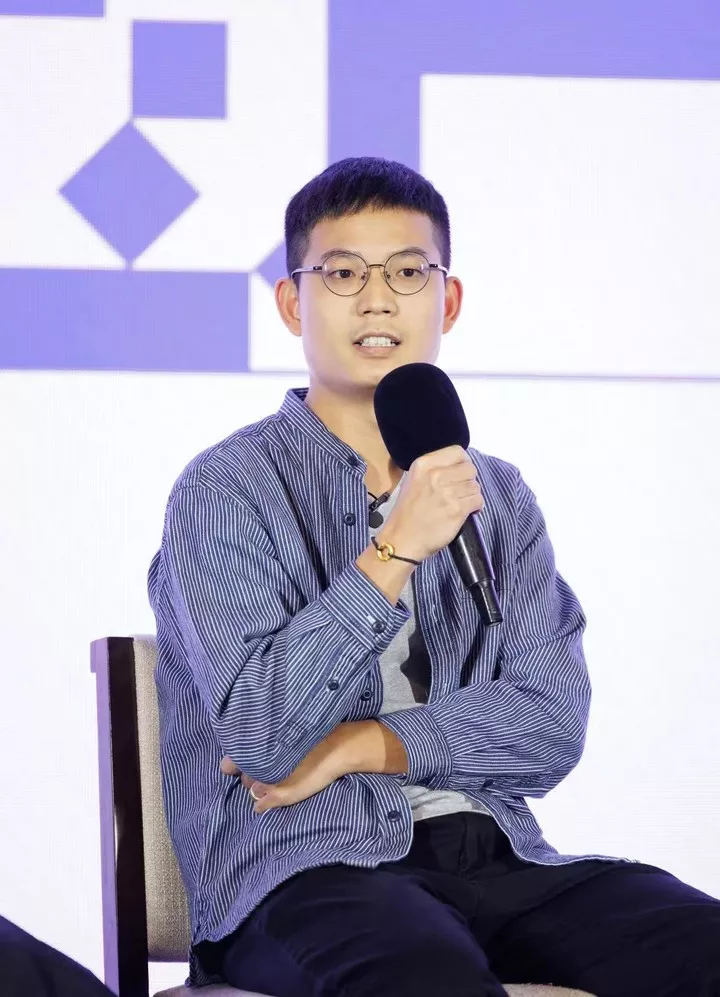
Liu Yinwei told that Vivo will adjust its R&D direction through face-to-face interviews with creators to meet the different needs of entry-level to professional-level creators.
For example, the development of the V1+ chip to address brightness and sharpness performance in low light environments for night scenes was based on feedback from creators shooting at night. We also intuitively felt it in the night scenes of "Lingering" and "Highway".
We hope that through image technology development, more people from different industries can experience the fun of image creation and more professional mobile image quality, and use superior mobile images to convey the concept of the joy of humanity.
A new generation of young creators is discovering that the five-minute super-short is the video medium narrative that everyone can create.

Nowadays video-based expression has become a habit for many ordinary people. As Zhang said, video-based expression should be a theme in the content field in the next decade, and the era is moving towards video-based expression.
With a platform like vivo x FIRST Super Short Film, more ordinary people have the opportunity to express themselves and enjoy the fun of video creation. For creators who want to go further in video creation, they may collide with new forms and techniques in the creation of super short films, and innovate traditional film and television narratives.
Over the past hundred years, cinema has been constantly colliding and merging with various arts and media - theatre, literature, games, the silver screen, television, mobile phones - and now meeting a medium like the ultra-short film opens up new possibilities.
An era in which 'everyone is an artist' is dawning, a future envisioned by the famous German artist Joseph Beuys.
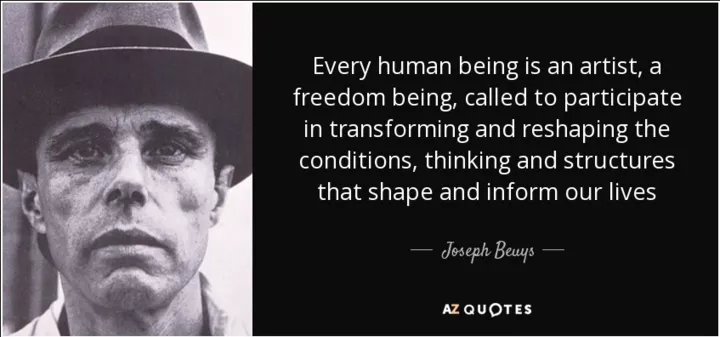
"Everyone is an artist" does not mean that everyone is already an artist, but that everyone has the potential to be creative and to be an artist. If one can draw strength from the most familiar and felt things around them, rethink and recreate, one can become an artist.
The mobile video ecosystem built by vivo based on humanized professional video technology and the FIRST creator community is to provide tools within reach of the "everyone is an artist" society, allowing everyone to have the freedom of video creation.
As Twitter has changed the way public expression is done. The public has given even the smallest individuals their own brand. The vivo mobile video ecosystem is allowing everyone with a phone to become a director of life .